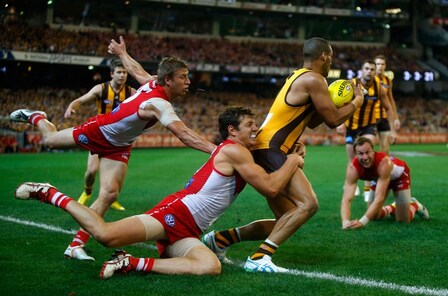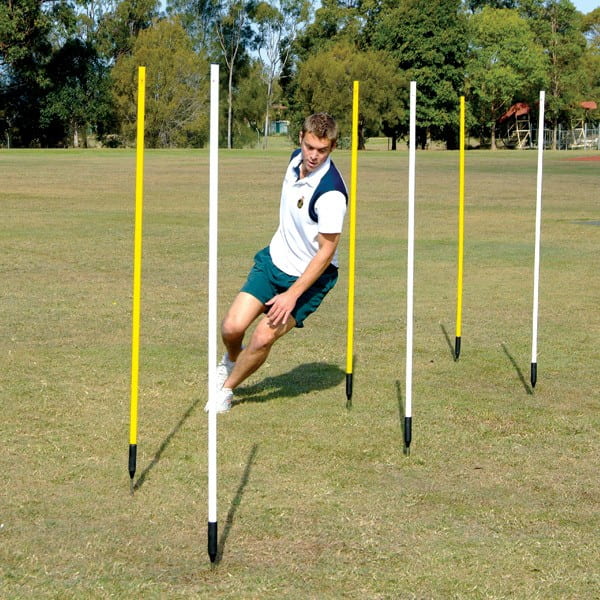|
With the Aussie rules football season just around the corner, how many of you have committed fully to your pre-season training? Has your pre-season training been sufficient for you to be fully prepared for the physical demands and rigours of playing football? It does not matter your skill level or grade you play you should always prepare well to prevent injury and optimise performance. What physical attributes do you need in football? Aussie rules football is a unique game. It is a high contact sport which requires a certain amount of physical fitness to perform successfully. The main pillars of physical fitness that the good football players have are:
Injury prevention Injuries are a big factor in football especially early on in the season. Injuries can make any season into a bad season for a player or a team and it is something you want to avoid. One of the main points for injury prevention is to make sure you are prepared to perform the specific demands of football especially early in the season. If you ask any person playing the game they will tell you the first game or two of the season are the hardest physically. Adequate warm up, good nutrition, good sleep/rest and a good recovery are all part of injury prevention around training and game time. What about during training? We can use something called specificity. Specificity is a term used in exercise science and it means to train the skill/ attribute/ movement you want to perform. You want to use specificity in your football training, particularly at the end of preseason, to best prepare. How to train the main attributes? Aerobic/ anaerobic endurance This one is probably an easy one for most people. Running in football is a non negotiable, so running during training is a must. To be more specific in your running training you need complete continuous running, interval running and short burst running as you do in a game. Elite players can run up to 15km - 18 kms per game so training to at least 6km-10kms a training session will better prepare you. Strength You need strength to lay tackles, wrestle with opponents, push off opponents and stand your ground when someone is trying to push you. In order to prepare for a game of football fundamental strength of the lower body and core is really important but also discount the benefits of having good upper body strength. This strength can be built using resistance training either in the gym or outside, I won’t get into the specific exercises that you can do. However, in order to be good at tackling and pushing off your opponent, one on one competitive type of training has to happen before the season. Agility To evade tackles, break tackles or tackle someone on the move, agility is important. To train this specifically you can use drills that incorporate competitive exercises where you're evading another player but you can also do this on your own. Great drills you can do on your own to improve agility all incorporate running at speed and changing direction. You can simply lay cones on the ground in a pattern that requires you to change direction. I would advise using both methods and doing it in multiple directions as football is a 360 degree sport. Speed I think everyone underestimates high speed running and what high speed running actually is. I believe high speed running is a really important factor to train to prevent injuries. In a game of football it is not uncommon to reach top speed because we aren't thinking about it, we’re just playing football, however at training it is different, there is no pressure, no urgency. High speed running should be implemented into any training program. It can be incorporated into your sprinting intervals or can be done separately. I believe it is always good to find what your max speed is and try to hit that at training. Hand and eye/ foot and eye coordination Coordination is quite common practice at training for any football team, it is just skills training, however there seems to be a misconception that you don't need to bring out the footballs during preseason and preseason should be just running.
Marking, hand balling and kicking are all fundamental skills needed in football and should be practiced whenever you are at football training. If you can’t kick, handball or mark a football as precise as you can or should be able too, your output on the field will be much less! Bottom line in any football preseason is that you need to be training the way you play and not leave it until 2 weeks out from the season. This does not mean all the time and every training but if you don't train at high speeds, have enough specific strength or have enough endurance you will increase your risk of injury during the season. If you want to help better your chances of staying injury free and playing to your potential in the up and coming season, we can help you with some advice, programming or one on one exercise sessions. Izaac Boylan Accredited Exercise Physiologist
0 Comments
What is the Tricep muscle? The tricep muscle sits in the back portion of your upper arm, between your elbow and shoulder joints. The muscle is made up of three muscle heads, hence “tri” in the name. Each of the three heads, the long head, medial head and lateral head, play a different role in each movement that it produces. The long head of the muscle is located on the inside portion of the arm, whilst the lateral head sits on the outside and the medical head is positioned between the two. It is surprising that the triceps actually accounts for two thirds of the muscle mass in the upper arm. What does the Tricep muscle do? The Tricep’s main function is to assist in stabilising the shoulder joint. It produces elbow extension (straightening out the elbow), shoulder extension (pulling the arm back) and adducts the shoulder (bringing the arm in towards the body). What are the best exercises to work each head of the Tricep? Lateral head: Tricep dips are a fantastic triceps exercise that can be both progressed and regressed depending on your level of ability. They focus on working the lateral head of the tricep but also target the medial and long head too.
Medial head: Overhead tricep extensions are another versatile exercise that can be done seated or standing. Whilst this exercise only uses one dumbbell it is important that you have a good grip with both hands on the dumbbell to ensure it is completed safely.
Long Head: Tricep pulldown with a neutral grip target the long head of triceps but altering the grip position can change the dominant head of the tricep that is working too. This exercise can be done using a cable machine or resistance band at home.
Written by, Aleisha Michael Accredited Exercise Physiologist. |
AuthorSLisa Parkinson Archives
July 2024
Categories
All
|








 RSS Feed
RSS Feed